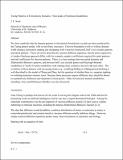Files in this item
Turing patterns in ferroelectric domains : nonlinear instabilities
Item metadata
| dc.contributor.author | Scott, James Floyd | |
| dc.contributor.editor | Meier, Dennis | |
| dc.contributor.editor | Seidel, Jan | |
| dc.contributor.editor | Gregg, Marty | |
| dc.contributor.editor | Ramesh, Ramamoorthy | |
| dc.date.accessioned | 2021-08-31T23:38:22Z | |
| dc.date.available | 2021-08-31T23:38:22Z | |
| dc.date.issued | 2020-09-01 | |
| dc.identifier | 260291146 | |
| dc.identifier | 1a26a53e-0cdb-46ba-88b3-8813b7386d3a | |
| dc.identifier | 85104519463 | |
| dc.identifier.citation | Scott , J F 2020 , Turing patterns in ferroelectric domains : nonlinear instabilities . in D Meier , J Seidel , M Gregg & R Ramesh (eds) , Domain Walls : From Fundamental Properties to Nanotechnology Concepts . Semiconductor Science and Technology , Oxford University Press , pp. 185-198 . | en |
| dc.identifier.isbn | 9780198862499 | |
| dc.identifier.uri | https://hdl.handle.net/10023/23878 | |
| dc.description.abstract | We show explicitly that the domain patterns in ferroelastic/ferroelectric crystals are those predicted by the Turing pattern model, with several basic structures: Chevron boundaries (with or without domain width change), dislocation zipping and unzipping (with velocities measured), bull’s eye circular patterns, and spiral patterns. These all can be described by reaction diffusion equations, but the terms required in a Landau-Ginzburg approach differ, with for example complex coefficients required for spiral patterns and real coefficients for chevron patterns. There is a close analogy between spiral domains and Zhabotinskii-Belousov patterns, and between bull’s eye circular patters and Rayleigh-Bernard instabilities or Taylor-Couette instabilities with rotating inner cylinders, but not with each other. The evolution of these patterns with increasing strain (e.g., wrinkling/folding or folding/period-doubling is well described by the model of Wang and Zhao, but the question of whether there is a separate rippling-to-wrinking transition remains moot. Because these processes require diffusion, they should be absent (or qualitatively different) near Quantum Critical points. Other ferroelectric domain instabilities, including vortex and Richtmyer-Meshkov are also discussed. | |
| dc.format.extent | 1278949 | |
| dc.language.iso | eng | |
| dc.publisher | Oxford University Press | |
| dc.relation.ispartof | Domain Walls | en |
| dc.relation.ispartofseries | Semiconductor Science and Technology | en |
| dc.subject | QC Physics | en |
| dc.subject | QD Chemistry | en |
| dc.subject | T Technology | en |
| dc.subject.lcc | QC | en |
| dc.subject.lcc | QD | en |
| dc.subject.lcc | T | en |
| dc.title | Turing patterns in ferroelectric domains : nonlinear instabilities | en |
| dc.type | Book item | en |
| dc.contributor.institution | University of St Andrews. School of Physics and Astronomy | en |
| dc.contributor.institution | University of St Andrews. Condensed Matter Physics | en |
| dc.contributor.institution | University of St Andrews. School of Chemistry | en |
| dc.date.embargoedUntil | 2021-09-01 | |
| dc.identifier.url | https://global.oup.com/academic/product/domain-walls-9780198862499?lang=en&cc=gb | en |
This item appears in the following Collection(s)
Items in the St Andrews Research Repository are protected by copyright, with all rights reserved, unless otherwise indicated.

